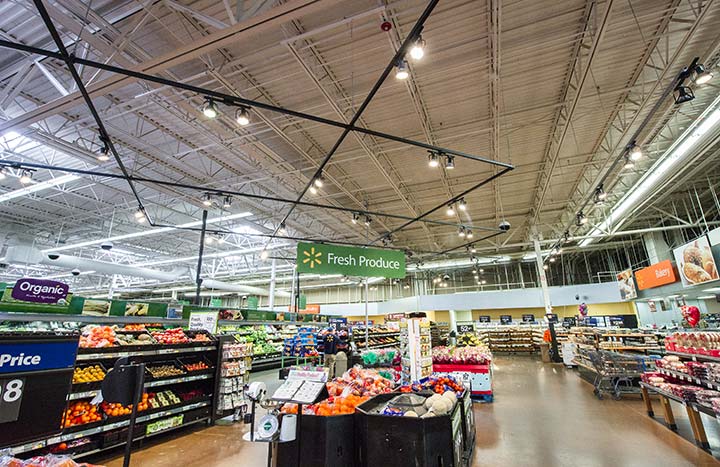LEDs: A Bright Spot for Domestic Manufacturing

February 12, 2020—It’s a safe bet that light-emitting diodes, or LEDs, power most of what is within your sightline as you read this – your consumer electronics, your car’s headlights, traffic lights. These days, LED-powered lighting is ubiquitous.
First developed in the 1960s, the adoption of LEDs has been growing significantly, due to their longer lifespan, smaller size, and reduced energy consumption as compared to incandescent bulbs. Coupled with the adoption of energy-efficiency regulations, LED lighting is rapidly overtaking conventional lighting sales. In fact, the U.S. Department of Energy predicts that by 2030, the implementation of LED-based lighting will result in 261 terawatt-hours of energy saved annually in the U.S. alone.
Because of their growing prominence, JISEA/NREL researchers published their techno-economic analysis of LED luminaires, specifically focusing on a global supply-chain analysis, a bottom-up comparative cost analysis, and technology analysis, along with a case study of a 2’x2’ troffer integrated with LEDs. The analysis looked at how advances in LEDs can incentivize adoption and spark significant domestic manufacturing gains.
Commercial Consumption
Lighting is organized into four broad categories: residential, commercial, industrial, and outdoor. Though outdoor lighting consumes more energy on a fixture-by-fixture basis, it only tallies 2% of the U.S. installed fixtures. Residential lighting accounts for the greatest number of lamps in the U.S., however total energy consumption is low because most lights are on for three hours a day or less. Commercial lighting is the big-ticket item, accounting for 25% of installed fixtures and 50% of energy consumed in 2010. A switch to LED lighting in commercial applications could lead to substantial energy savings.
Meeting LED Demand Domestically
Researchers compiled data for each country on LED packages, LED die, sapphire substrates, and the mining of necessary components (refer to LED supply chain graphic). They found that China, South Korea, Taiwan, and Japan are home to the majority of sapphire wafers, die, and die packaging. The United States accounts for less than one percent of the sapphire substrate market and ~5% of the die market.
In looking toward projected future LED demand and the ability to adequately satisfy it, the researchers found that the current sapphire substrate capacity is adequate to meet the 291 trillion units of LED packaging demand expected in 2020, however the world’s LED metal-organic chemical vapor deposition capabilities are not, and must increase by 25% by 2020.
To understand trade flows along the value chains, researchers employed datasets from Trade Map to chart the trade flow of LED die and packages. They found that the United States, though not a dominant producer for LED die and packaging, still reaps billions in contributions to the domestic economy, producing 77% of integrated luminaires for domestic consumption.
Produce Locally
Researchers then calculated value-added, generating three bottoms-up cost models to pinpoint the minimum sustainable price (MSP) at which companies must sell their products to cover capital and operating expenses over the lifetime of the plant. The models were applied to die, packaging, and luminaires.
Using the U.S. as an example, the researchers looked at the value chain for a 2’x2’ integrated luminaire. They found that 65% of the value is added at the luminaire stage, which happens to be the part manufactured domestically.
A bottoms-up analysis of the 2’x2’ integrated troffer revealed that, while labor costs are cheaper in China, Mexico, and India, resulting in a lower luminaire MSP, this is prior to the inclusion of shipping costs (refer to Figure 3). When shipping costs are included, the cost differential between countries is mostly negated. Moreover, countries with lower labor costs generally spend between three and 25 times the time on transportation as compared to a domestically manufactured product.
The bottoms-up model review combined with a shipping cost analysis demonstrate that higher labor costs are offset by shipping cost. Thus, manufacturing luminaires locally, makes sense, regardless of the country-specific factors.
Win-Win for Energy Savings and Domestic Manufacturing
The researchers concluded that LED integrated luminaires offer a win-win opportunity for both energy consumption and economics. The adoption of LED luminaires reduces the required amount of energy needed for lighting and have a value chain that allows for domestic manufacturing, ultimately benefiting domestic economies.
For more information, see the full article published in Lighting Research & Technology.
Back to JISEA News >
